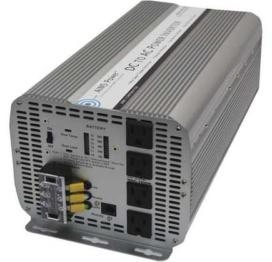
What Causes Leggy Seedlings
We can watch with excitement as the seedlings grow taller, only to realize that they have grown too tall and are now a bit floppy. This is known as leggy seedlings.
At the most basic level, leggy seedlings are caused by a lack of light. It could be that the window you are growing your seedlings in does not provide enough light or it could be that the lights you are using as grow lights are not close enough to the seedling. Either way, the seedlings will get leggy.
This happens due to the natural reaction of plants to light. Plants will always grow towards a light. Leggy seedlings happen for the same reason crooked houseplants happen. The plant grows towards the light and, since the light is too far away, the plant tries to accelerate its height to get close enough to the light to survive. Unfortunately, there is only a limited amount of growth a plant can do. What it gains in height, it sacrifices in the width of the stem. As a result, you get long, floppy seedlings.
Leggy seedlings are a problem for many reasons. First, seedlings that are too tall will have problems when they are moved outdoors. Because they are thin and floppy, they can’t stand up as well to natural occurrences like wind and hard rain. Second, floppy seedlings have a hard time growing up to be strong plants.
How to Prevent Leggy Seedlings
The best way to prevent leggy seedlings is to make sure they are getting enough light.
If you are growing seedlings in a window, try to grow them in a south facing window. This will give you the best light from the sun. If a south facing window is not available, you may want to consider supplementing the light the seedlings are getting from the window with a small fluorescent bulb placed within a few inches of the seedlings.
If you are growing your seedlings under lights, either a grow light or a fluorescent light, the best way to prevent leggy seedlings is to make sure that the lights are close enough to the seedlings. The lights should remain just a few inches above the seedlings as long as you have them indoors or your seedlings will get too tall. Many gardeners put their lights on adjustable chains or strings so that the lights can be moved upwards as the seedlings get taller.
You can also force seedlings that are too tall to grow thicker by brushing your hands over them a few times a day or placing an oscillating fan to blow gently on them for a few hours every day. This tricks the plant into thinking that it is growing in a windy environment and releases chemicals in the plant to grow thicker stems to be better able to withstand the supposed windy environment. This should not replace providing more light, but can help prevent leggy seedlings in the first place.

Attracting Beneficial Insects

Best Light for Plant Growth

How to Harden Off Your Seedlings

When to Transplant Seedlings
Trackbacks and pingbacks
No trackback or pingback available for this article.
0 comments
Leave a reply Delete Message
Articles
Featured
-
 Patio Garden Recharge KitRegular Price $49.00
Patio Garden Recharge KitRegular Price $49.00 -
 Drain Dish & Diffuser Dish Set 5 PackRegular Price $69.95
Drain Dish & Diffuser Dish Set 5 PackRegular Price $69.95 -
 EzGro Patio GardenRegular Price $389.99 – $399.99
EzGro Patio GardenRegular Price $389.99 – $399.99 -
 EzGro Precision Micro TrimmerRegular Price $11.99
EzGro Precision Micro TrimmerRegular Price $11.99 -
 Five Tower Strawberry GardenRegular Price $2,799.00
Five Tower Strawberry GardenRegular Price $2,799.00 -
 Vegetable Formula single dose SetRegular Price $29.99
Vegetable Formula single dose SetRegular Price $29.99 -
 EzGro Quad Pot 25 PackRegular Price $274.99
EzGro Quad Pot 25 PackRegular Price $274.99 -
 Rainwater Pressure Tank SystemRegular Price $449.00
Rainwater Pressure Tank SystemRegular Price $449.00 -
 5000 Watt 48 Volt Power InverterRegular Price $899.00
5000 Watt 48 Volt Power InverterRegular Price $899.00 -
 Drain Dish & Diffuser Dish SetRegular Price $16.99
Drain Dish & Diffuser Dish SetRegular Price $16.99









do you have a starting point for amount of light i would use to grow green peppers from seed? starting light when seedlings emerge up to the time to transplant outside?
Your grow lights should be turned on (or your seedlings should be put under lights) as soon as the first seed starts to sprout. Many types of seedlings grow super fast, and they will start reaching for the light as soon as they emerge. So give them plenty of light right from the start.
Keep your grow lights 2-3″ above the top of your seedlings at all times. At first, your light will sit directly above (but not touching) the plastic lid on the seed tray. Once the seedlings start to grow, and you take the lid off, then you’ll have to adjust the lights on a regular basis so it stays above the top of the seedlings (having a grow light system that is simple to adjust make this job a whole lot easier!). Your seedlings should never touch the bulbs, so make sure to check on them often. Rotate the seed trays daily if you notice the seedlings that aren’t directly under the light are reaching for light, or aren’t growing as well as the ones that are directly under the light.
Your grow lights need to be kept on for about 14-16 hours a day. Don’t leave them on 24 hours a day though. Like us, seedlings need to rest for a few hours each day. So plan to give your seedlings 14-16 hours of light during the day, and then leave the light turned off overnight. Use an outlet timer to make keeping this schedule a snap, and ensure your seedlings get the perfect amount of light.